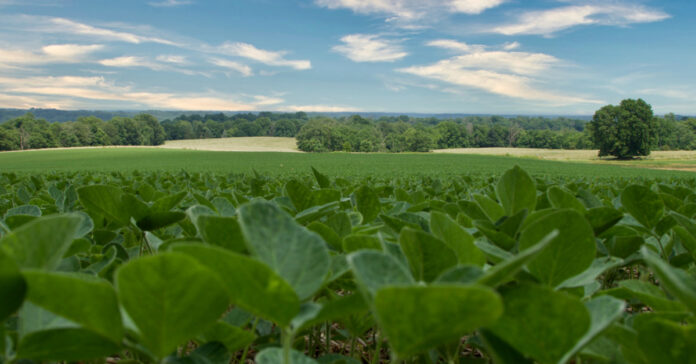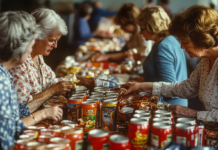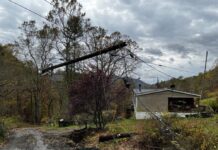The world is heading into some troubled times. It’s going to be worse in third-world countries, but it will affect developed countries, up to and including members of the G7. It’s going to be especially tough in Asia, the Middle East and Africa.
The chief driver of this trouble is going to be a shortage of food leading to rapidly rising prices. Those hit the worst will be countries with lower standards of living, where food costs can consume half of a family’s income or where the government subsidizes food. The more population in poverty or close to the line, the worse the problem will be.
If you live in the U.S., you should get prepared by setting aside some food storage. If you are an American living abroad, consider returning home in the next six months or make plans to bug out when things get bad. Citizens of other countries should also prepare; prepping is not exclusive to the United States.
Food Crises can Lead to Political Crises
Rising food costs and shortages can lead to regime change faster than war. Food riots are no laughing matter, and more than one government that was considered stable has been brought down from the inside because of angry farmers and a hungry populace. China knows a government that cannot keep meat, bread, and rice on the store shelf will have trouble keeping its government in place. They are stockpiling large amounts of food right now. It shows more foresight than many.
Over a decade ago, Scientific American said, “The biggest threat to global stability is the potential for food crises in poor countries to cause government collapse.” A few years later, rising food prices triggered protests in Egypt and Syria and were a contributing factor to the Arab Spring. The potential for such disruption is still there.
China, Egypt, and Japan are the top three importers of grains. China is the biggest importer of soybeans, importing more than five times as many as the EU. The United States is the largest exporter of grain and the second largest exported or soybeans. Brazil is the largest exporter of soybeans and a leading exporter of corn and other grains. Both countries are experiencing severe droughts that are already driving up prices and could cause a global shortage. Since the U.S. is in the middle of what may be a very lengthy drought, this is not a short-term problem.
Smaller countries that import the bulk of their foods could also be in trouble, including Saudi Arabia, Egypt, Algeria, Turkey, the Ukraine, and even countries across the EU. This is on top of countries that are already experiencing problems, from Afghanistan and Venezuela to Iran and parts of Africa, where famine is a constant threat.
Many Countries Cannot Feed Themselves
Many countries today cannot generate enough food to sustain their populace. The Western Hemisphere, meaning North and South America, produces and ships large quantities of food to the Eastern Hemisphere, including Europe, Africa, and Europe. While there are some net exporters there, like Russia, the breadbasket of the world is an ocean away from its customers. That means the increased cost to ship food is going to contribute to the rising cost of food, compounding the problems created by the shortage.
This problem would exist without COVID-19, but the pandemic is not helping. It contributes to shipping disruptions, it complicates international business, and it adds another straw to the camel’s back. Like a fighter than can shake off the first punch, sometimes a government cannot take two consecutive blows. A populace angry about COVID-19 restrictions or a lack of government response might be pushed over the edge as food prices rise.
The Cost of Globalism
In the United States, we are experiencing a shortage of microchips, but it’s unlikely to generate riots. Yes, it is another issue for the Biden Administration to deal with and it may negatively affect the economy, but it is unlikely to bring out marchers with pitchforks and torches. We can also build more chip foundries and address this problem in a three to five year period. Food is another issue. Americans have marched in the street over food inflation before; they could do so again.
Unfortunately, not every part of the globe can produce enough food to sustain its population, no matter how many farms they carve out of the earth or how many combines they produce. The land is too arid. There is not enough water.
Even in parts of Asia and Africa where there are good conditions, the transition from peasant farmers producing small amounts to large-scale farming with higher output would take too long, cost a great deal, and displace too many people to be politically acceptable.
The Farms Product Us
Our massive food exports surplus is one reason an economic collapse or some other kind of SHTF event in the U.S. would cripple the rest of the world. We produce a huge amount of the food that feeds hungry people everywhere. When you consider that an EMP, nuclear war or other man-made event would likely knock out large swaths of Canada’s farming capability, the damage would be even worse. While Brazil, Argentina and other countries are also exporters, they alone cannot produce enough to satisfy demand.
China has to consider this when they think about attacking the U.S. How will they survive without the grain, pork, soybeans, and other food we sell them? Any successful attack by China would have to include an invasion just to ensure they can continue to feed their people, and that makes it highly unlikely. Of course, that is probably why China is being so aggressive in undeveloped parts of the world, such as Africa. It’s not just minerals they are after; its farmland. When China no longer needs us to feed their billions, we could be in trouble.
Stock Up on Food
Wherever you live, stock up on food. Put aside some 25 or 50-pound bags of rice. Buy a few bags or pails of wheat and a hand-crank grain mill. Don’t bother buying soy beans unless you eat them regularly, but stock up on black beans, pinto beans, lentils, or whatever beans or legumes you frequently eat.
Consider gardening or raising small livestock. If that’s not possible, look into sources of locally produced food. Find small farmers near you. Look into buying locally raised meats and eggs. Yes, these are more expensive than food at the big grocery store, but if you establish a good relationship with a local provider, you may have a food source when others do not.








